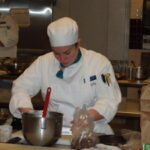There are a number of things I look for in a nutrition magazine: a focus on unprocessed ingredients, photos that tantalize my taste buds, dishes that involve ingredients I already have in my pantry, and recipes that are creative but also doable for those of us that didn’t attend culinary school. Following are the magazines that fit my bill, to varying degrees.
Most of these magazines can be found at your local supermarket or drugstore; if you don’t see them there, check out Barnes & Noble or Borders, which tend to have a broad spectrum of titles for purchase. Of course, it’s always much less expensive to purchase a subscription than to buy each issue of a magazine separately.
Clean Eating(newsstand price: $5.99; subscription price: 6 issues/one year for $19.97)
I love the Clean Eating philosophy, which is the basis of the magazine: people should eat food in its most natural state – or as close as possible to that state. According to the magazine, a clean-eater’s diet is built on a foundation of lean protein, colorful fruits and vegetables, whole grains and water. Who could argue with that? The magazine is great for those new to this lifestyle, as well as those who have already adopted it. There are loads of wonderful, straightforward recipes – featuring easy-to-find ingredients – and gorgeous photos to accompany them. Each issue even provides a 14-day Clean Eating Meal Plan that includes shopping lists by week and all the recipes, making the mag quite a useful tool. Recipes featured in a recent issue include No-Bake Chocolate Chip Cookies and Clean Cuban Sandwiches. The magazine also features lots of cooking tips, as well as information on healthful ingredients you may never have heard of, like chia seeds, which boast more omega-3s than flax seed! If you’re interested in a free trial issue of the magazine, click here.
Eating Well(newsstand: $4.99, subscription: 6 issues/one year for $14.97)
Eating Well is strictly about food and nutrition, with a focus on whole foods. I appreciate that the mag’s recipes don’t feature highly-processed foods (like Cooking Light’s reliance on, say, fat-free sour cream), instead substituting healthy ingredients like yogurt to lighten a dish. Eating Well‘s recipes – including mouth-watering dishes like Arugula & Prosciutto Pizza, Broccoli-Bacon Salad, or Raspberry Bars – are simple and easy-to-follow. There are, however, many meat dishes, so this is not necessarily a great purchase for vegetarians. The magazine also does a nice job of tackling larger food issues, like the importance of consuming seasonal, farm-fresh produce. One outstanding characteristic of Eating Well is the dearth of advertisements – it makes me, as a reader, feel that the editorial choices and recommendations are based on a food’s merit, not on the publisher’s promise to his advertisers.
Whole Living: Body + Soul(newsstand: $4.99; subscription: 10 issues/one year for $10)
Body + Soul takes a holistic view on health: mind, body and spirit. It has sections such as “Conscious Eating,” “Green Living,” and “Inner Growth.” Although it is not solely focused on nutrition there are helpful and informative bits on food throughout, even in articles on natural remedies or relieving stress. Notably, the pieces on food are wonderful. 25 Fast, Healthy Recipes” in the September 2009 issue is amazing in that each recipe is so straightforward that it is written in about a sentence; each recipe is also accompanied by a luscious photo (would you expect any less from a Martha Stewart publication?). Another feature – “The Truth About Calories” – is uncomplicated and incredibly educational, and should be required reading for everyone in our diet-obsessed but increasingly overweight country.
Prevention(newsstand price: $3.59, subscription price: 99¢ per issue plus shipping)
Prevention is kind of the patriarch of the wellness magazines – it’s been around for ages and really set the stage for all these younger magazines. But it lacks the freshness and appeal of the aforementioned magazines. Like Body + Soul, Prevention has enlightening nutrition tidbits throughout its features; for example, articles on boosting your memory with walnuts or lowering your blood pressure with chocolate. The magazine’s nutrition section provides some uncomplicated and tasty-sounding recipes, but the format – nonexistent or small photos, tiny fonts – makes the dishes less tempting to actually create. Many of the recipes also rely on highly processed “faux foods” like egg substitutes, which I find unappetizing and (dare I say it?) passé. Additionally, there are an incredible amount of pharmaceutical advertisements in a magazine ostensibly devoted to health. The degree of the drug advertising undermines the magazine’s message of preventing illnesses in the first place. However, Prevention is probably the most readily available (it’s at pretty much every supermarket checkout line) and it’s a smaller size than most mags, so it is light and fits easily in your bag for some instructive reading on the go.




